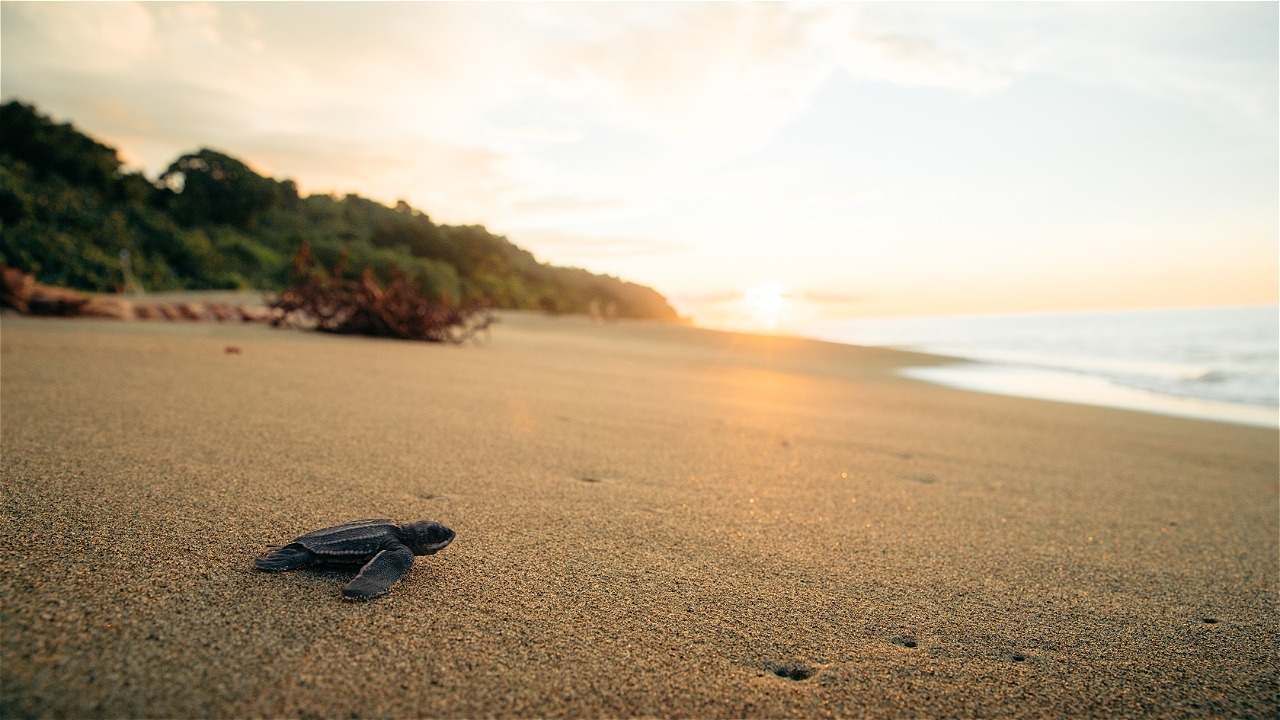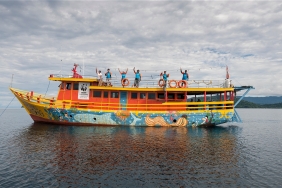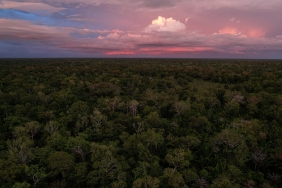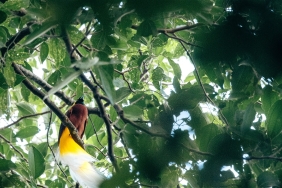ECOTOURISM IN JEEN WOMOM COASTAL PARK
By: Hadi Ferdinandus (Technical Leatherback Conservation Management Coordinator WWF-Indonesia Papua Program)
Four species of sea turtles, namely the leatherback turtle (Dermochelys coriecea), Olive Ridley turtle (Lepidochelys olivacea), Green turtle (Chelonia mydas), and Hawksbill turtle (Eretmochelys imbricata) have made the coast of Jeen Womom a visited nesting home for decades. Countless thousands of hatchlings emerge from their shells and head for the open ocean, braving predators and awaiting their fate; life or death. Their journey mirrors the current health of Papua's ecosystems.
Leatherback turtles are one of four species of turtles in Jeen Womom Coastal Park that are fighting for their lives. Research over the last 27 years, 1984-2011, shows that the number of leatherback turtles landing to lay their eggs each year has declined by 78.3% in the last period. WWF survey results in 1993 showed that the decline was related to rampant poaching and the death of mother turtles in the leatherback turtle migration routes. The collection of turtle eggs also correlates to the number of turtles.
The survey in 1993 became an important year for WWF-Indonesia to work on sea turtle conservation. WWF saw the drastic decline of sea turtles as an alarm to improve the quality of environmental governance of the Jeen Womom coastal area. Within the framework of conservation thinking, WWF sought a program solution, where the parties around the coast took an active role in the conservation movement.
However, the turtle conservation program has its own challenges. Sea turtle conservation in the Jeen Womom Coastal Park area requires the active involvement of residents to participate in monitoring sea turtle hunting or turtle egg collection. "We all understand that conservation is needed to keep nature in balance. But we are also required to revive other programs - in this case ecotourism - so that the community can benefit from turtle conservation itself," explained carateker Tambrauw Regency Regent, Mr. Elisa Sroyer, M.Si to representatives of Tambrauw ecotourism management communities and government.
Elisa Sroyer said that Jeen Womom Coastal Park is part of Tambrauw Regency. This region is not only the longest nesting site in the world, but also a place where a variety of exotic birds - king cockatoos, cassowaries, mambruks, etc. - inhabit 70% of its forest area. The mountainous topography, various tree species and small rivers with natural springs make this region a haven for a wide variety of species. "Our wealth is extraordinary. It should benefit the people here," Elisa said.
The local government plans to develop an ecotourism program under the control of the Tambrauw Regency Tourism Office, and with the support of WWF-Indonesia. "Specifically, we need infrastructure improvement, human resource capacity building, promotion and adherence to sustainability aspects," Elisa said again.
WWF expressed support for a sustainable tourism program in Tambrauw. "Tourism is a tool to encourage change at the community level. The process cannot be fast, but tourism is an effective solution at this time," said Indarwati Aminuddin, National Coordinator for WWF-Indonesia's Responsible Tourism program. She continued, in some areas such as Bali or Wakatobi, turtle hunting has been transformed into an activity that has proven to increase the economic value of local residents. "In Kurma Asih Perancak Bali, for example, the community stopped hunting. They started a turtle nest donation program, turtle patrol, hatchling release and so on. The trend of visits has also increased, tourists are enthusiastic about donating to activities that support turtle conservation, "he explained.
Another ecotourism activity is to connect land and sea - observing turtles, observing birds, seeing the culture of local communities - without reducing the principles of sustainability. "If we can work together to revive and promote land and sea connectivity, as well as improve the skills of local communities to become tourist escorts, I believe tourism in Tambrauw can move slowly in a better direction," concluded Indarwati.





